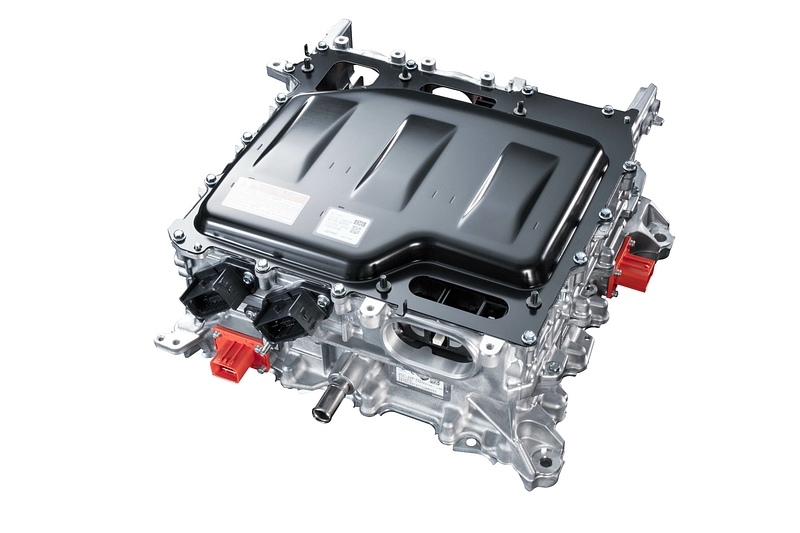DENSO products electrify Toyota and Subaru’s new all-electric bZ4X and SOLTERRA
IMPORTANT NOTE: While DENSO Aftermarket is proud to share technical knowledge and experience, please note that the technology mentioned in this article is original equipment (OE) technology and is not yet available in its aftermarket range.

DENSO is a leading OE component manufacturer and system supplier and its newly developed products that feature on the bZ4X and SOLTERRA include a current sensor, which detects the flow of electricity either charging and being discharged from the battery, and an electricity supply unit (ESU) that integrates the functions of battery charging, electrical power conversion and electrical power distribution.
On the thermal management side, DENSO also supplies the heat pump system, which extracts heat from the air and uses it as a heat source for the vehicle’s climate control system and, for the bZ4X only, the radiant heating system that warms the lower body of the passengers.
Other DENSO products, such as sensors that monitor battery voltage and temperature, the battery monitoring electronic control unit (ECU), which monitors the status of the battery and the battery electric vehicle (BEV) ECU that combines sensor information to control energy flow, all feature on these two models, alongside inverters used in the eAxle, Blue Nexus Corporation’s driving modules, for electric vehicles.
In BEVs, the battery is the sole energy source, so minimising the amount of energy needed and efficiently recovering energy, to use all the energy generated, helps to make them more practical. To efficiently manage electrical energy, throughout the vehicle, DENSO is developing technologies that help monitor its status and efficiently control its energy use.
DENSO’s major new products used in the bZ4x and SOLTERRA
Monitoring the status of the BEV
Precisely identifying the status of the vehicle is essential to maximise its use of energy. DENSO’s new current sensor and ESU provide the bZ4X and SOLTERRA with critical vehicle information, to efficiently control the vehicle’s energy.
Current Sensor
- Handling high currents in the ±1,200A range used in BEVs, while being 40% smaller in size, required a completely redesigned IC and new structure, without a core
- Detecting the current more precisely using a new detection method called magnetic balance, has enabled the sensor to be less magnetised
Electricity Supply Unit (ESU)
- Combining a group of products essential for BEVs into one unit with the functions of battery charging, electrical power conversion and electrical power distribution, with the ECU that controls battery charging, AC battery charger and DCDC converter developed by Toyota Industries Corporation
- Expanding electric driving range and the passenger space, by reducing size and weight and creating large battery capacity
- Reducing battery charging times with quick-charging function
Controlling and using the BEV’s energy efficiently
The efficient control and usage of energy in BEVs can make them more practical. The bZ4X and SOLTERRA use DENSO’s new, highly efficient, heat pump system, which consumes less power, but efficiently extracts heat from the air for heating functions and the radiant heating system.
Highly Efficient Heat Pump System
- The world’s first heat pump system, which has been developed to activate a defrosting function while the BEV is moving. This improves its energy efficiency when the heat pump system becomes frosted in winter
- Converting the refrigeration cycle into a receiver cycle required precise control of the working cycle and a multifunction valve called an MCV-e (multi-flow control valve for EV). It improves the heat pump’s cooling performance, while significantly reducing the number of components in comparison to an accumulator cycle, which is used in other heat pump systems
- Exchanging heat between the high-temperature water circuit, low-temperature water circuit and the refrigeration cycle, using an MCV-e, simplified the system by integrating the water circuits, which ensures quality and improves scalability
- A small, high-performance chiller helps to extend battery life with greater battery cooling efficiency, which suppresses sharp rises in battery temperature to ensure a stable energy output from the battery
Radiant Heating System
- Helping to extend electric driving range when the heating is on. Combined with the heat pump system, the highly heated surface reduces the energy required to efficiently warm the vehicle’s occupants
- Ensuring both comfort and safety: the surface of the heater has a thin-film structure that can be heated to over 100°C in about a minute, to quickly warm the knee area. However, utilising heater structure technology that is a world’s first, the moment a passenger touches the heater’s surface, its temperature drops below 50°C. The structure has a built-in contact sensor that detects an occupant’s contact and stops heating, even if the passenger touches the surface of the heater for a long time.
To achieve carbon neutrality, it is important to contribute to vehicle electrification and minimise CO₂ emissions. Therefore, DENSO will continue to develop electrification technologies to help BEVs offer greater value and provide a variety of sustainable solutions to vehicle users and society.
“Despite these advances currently being exclusively OE solutions, DENSO’s ability to develop components and systems capable of achieving these challenging demands, also filters down to its aftermarket programme,” said DENSO Europe, Pan European Strategic Marketing Manager, Fatiha Laauich. “This means that wholesalers and the professional technicians fitting DENSO products can have complete confidence in the replacement parts they install as they service and repair their customers’ vehicles.”




















































